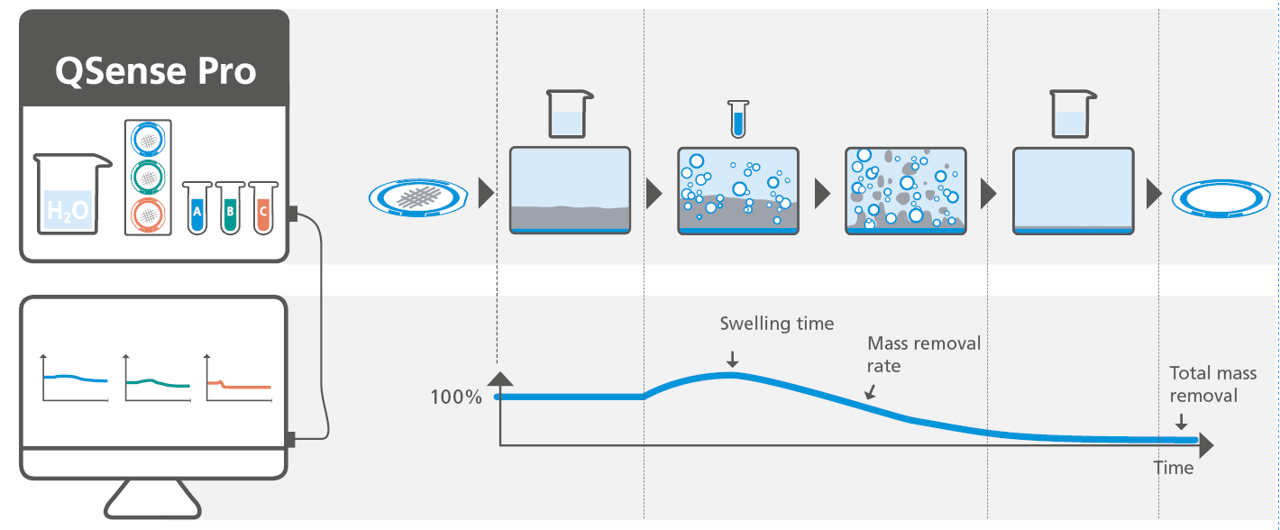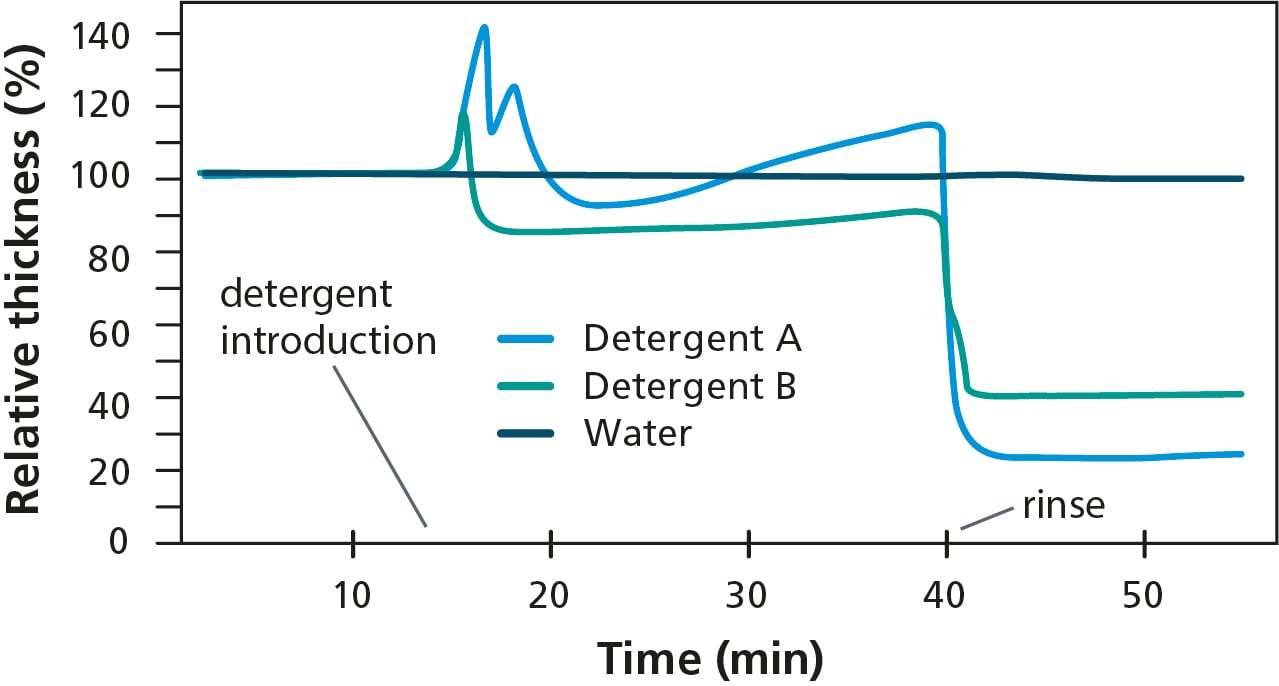
One way to assess the soil removal efficiency of a surfactant or formulation is to run a cleaning test of a soiled surface and thereafter run an analysis of the cleaning result. It is however possible to shorten this evaluation process by combining these two steps and run them simultaneously. Here we show you how.
Using a time-resolved technology, i.e. a technology that measures at the same time as the process is taking place, it is possible to monitor the soil removal during the cleaning test and get the result directly. Not only will this approach save time, but it will also eliminate the manual handling of the surfaces in between the test and the analysis, and, it will reveal new information on the soil removal process.
An example of a method that could be used for this assessment is QSense® technology, which provides information on the soil removal with nanoscale sensitivity.
The soils to be assessed are coated onto sensors and mounted into the measurement equipment together with the cleaning formulations to be analyzed. Next, the setup is programmed with the wash sequence to be executed in the cleaning test. When the wash sequence starts, the soil removal is monitored in real-time, Fig 1. This enables a direct comparison of the soil removal processes and performance of the formulations used.

Figure 1. Using a time-resolved technology, the soil removal process is monitored as it takes place and the result is obtained already during the cleaning test.
As an example, let’s have a look at the results from a test where the soil removal by two detergents, A and B, was evaluated. The results are shown in Fig. 2, where the soil thicknesses are plotted as a function of time.
Comparing the behavior and performance of the two detergents, the soil thicknesses reveal that detergent B acts faster than detergent A, but that it has a lower overall cleaning efficiency. It is also noted that detergent A causes more initial soil wetting, than does detergent B.

Figure 2. The graph shows the soil removal by two different detergents, A and B, which is monitored as it takes place during the cleaning test. The plot, which shows the soil thickness as a function of time, reveals both the soil removal process and the cleaning effectiveness of the two detergents. Water was used as a negative control.
Using a time-resolved technology to analyze the soil removal, the information on the cleaning efficiency will be obtained already during the cleaning test. Not only will this method offer additional information in terms of detergent behavior and soil removal dynamics, but it will also save time and eliminate a manual handling step potentially interfering with the tested sample.
Read more about the soil removal evaluation and comparison in the case study
Discover how QCM-D analysis reveals real-time etching dynamics, helping optimize cleaning processes and protect surfaces from unwanted damage.
Learn how QSense QCM-D analysis can reveal membrane fouling dynamics and optimize cleaning strategies for more efficient water treatment
Discover how QCM-D enables real-time cleaning analysis and reveals surfactant performance to optimize cleaning product development
Explore QSense QCM-D sensors to optimize cleaning efficiency with real-time insights, enhancing formulations and protocols across various conditions.
Discover how QSense QCM-D technology reveals real-time cleaning insights. Join our webinar to enhance your cleaning strategies and efficiency.
QSense QCM-D technology enables analysis of cleaning process dynamics, surface etching, and surface residual
Cleaning product performance assessments can be time-consuming, but with the right approach, evaluation and ranking can take less than one hour.
Read about the different components in cleaning products and how they work on a molecular level.
The traditional way of assessing etching properties can be time-consuming. But there are faster ways. Here we present a method that will help you assess the etching effects in one single wash cycle and in less than an hour.
When, Nouryon (former AkzoNobel speciality chemicals), launched a new surfactant with a good dermatological profile, they wanted to prove superior performance vs competitive benchmarks. As the current test methods were not sensitive enough, they turned to an analysis using QSense cleaning profile.
Eva Ekerot is the Marketing and Communications Director for QSense. She has a background managing numerous product portfolios within the medical technology and analytical instrument industries. She is devoted to user-driven development of high-tech products. More user-friendly technology is accessible to more people!
